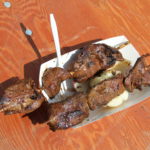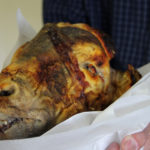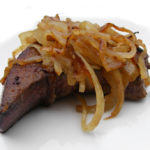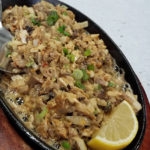How I learned to stop worrying and love the bits
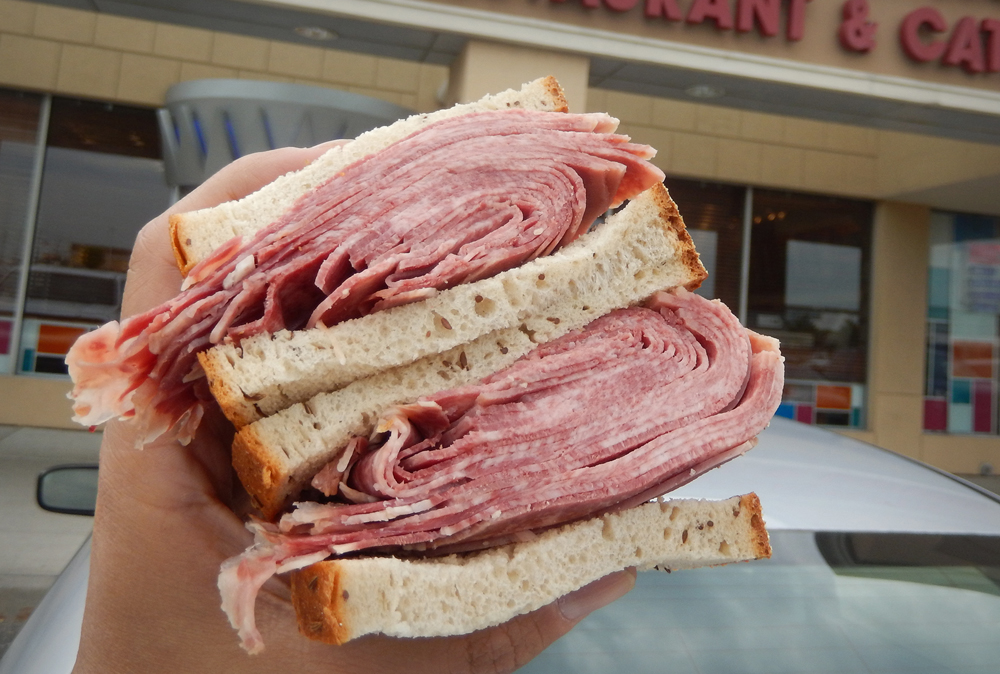
As a picky young eater, if I refused to clean my plate of London broil, string beans and potatoes au gratin, my father would impose the threat, “finish it or tomorrow I’m making liver and onions for dinner.”
If my parents asked me what I wanted to eat for dinner and I didn’t offer a reasonable suggestion, I would be met with that threat again: “Fine, I’m making liver and onions.”
“Liver and onions” became the go-to disciplinary warning in my childhood home. Didn’t clean your room? Liver and onions. Get an F on the math test? Liver and onions. Complain about the liver and onions threats? Yup, liver and onions.
Well, mom and dad, the joke’s on you because I tried liver and onions and, guess what, it’s amazing.
Use Your Brains, Eat Organs
Most people spend their lives doing everything they can to avoid organ meat or any nasty bits of the animals they eat on a regular basis. They happily grill chicken breast, but shy away from chicken feet; they gorge on slabs of steak, but refuse to sample the stomach (tripe); they are perfectly OK with a baby cow becoming veal parmesan, but will turn their head in disgust when presented with that same animal’s thymus glands (sweetbreads).
There is nothing scary about the forgotten chunks of the sources of our protein. Butchers and chefs call it offal, which is said to mean “off-fall” or what is left over after the butchering process is completed. This includes, heart, liver, tongue, kidneys, glands, feet, nose, ears, eyes, brain and basically anything else deemed “gross” by the masses. In reality, these horrific cuts of meat are higher in nutrients and iron than all of those other pedestrian portions. Liver is perhaps the most concentrated source of vitamin A and is one of the best sources of folic acid. Beef heart pumps with amino acids that improve metabolism and kidneys are loaded with B12 and B6.
And the selling points of offal go beyond mere health benefits. According to Butcher Magazine, it is a fact that if more people ate offal, the price of meat in general would plummet as this economically sound menu ensures not a single bit of animal protein is put to waste. What’s more, offal is far less expensive than more popular cuts of meat.
A Heart For History
Offal has been consumed for as long as living things have eaten each other. And when humans took over the top of the food chain, you can bet they put every single piece of the animal to good use. In fact, because of innards’ tendency to spoil first, it was often consumed immediately upon dispatching the animal. Fast forward to medieval times when servants would save offal for themselves while the lords and ladies of the manor would devour fancier cuts. The servants would take the leftover organ meats—liver, heart, lungs, etc.—and bake it all into a pie. This is where we get the idiom “to eat humble pie,” although back then it was called “umble pie.”
In America, different regions have wrestled with offal popularity throughout history. In the mid-Atlantic region, scrapple is a popular fried breakfast sidecar and is often made from a nose-to-tail conglomeration of pork offal. In the American south, chitlins, or pig guts, have been a staple for generations. Meanwhile, fried brain sandwiches are a nasty taste of choice in the Ohio River Valley and, of course, Rocky Mountain Oysters are the main way the rugged American west consumes beef testicles. In the northeast, us New Yorkers need only to seek out our local kosher Jewish deli for a beef tongue sandwich with a side of chopped liver.
Haute Horror
In a somewhat ironic twist, offal has been introduced into expensive, trendy cuisine, with stylish restaurants adding the likes of buttery bone marrow, skewered beef hearts and pig ear salad to their menus. The newfound prevalence of what was once peasant food can likely be attributed to the popularity of shows like Bizarre Foods with Andrew Zimmern and No Reservations (RIP Anthony Bourdain), which have brought the once reviled offal to the forefront of adventurous eating.
But in New York, the cultural diversity center of the foodie universe, this food has always been available at insanely reasonable prices. In East Meadow, Kabayan Grill offers sizzling sisig, a Filipino classic consisting of finely chopped bits of pork head, jowl, ear and shoulder with hot peppers and lemon. Across the Queens border in Glen Oaks, Bundu Khan takes eaters on a wild ride through animal innards, with the Middle Eastern eatery delivering an extreme meat dish called “kat-a-kat” with goat or lamb kidney, brain, heart and testicles.
Tail End
Somewhere along the way, we were all instilled with a fear of offal—scary, mushy meats that are bloody, gore-soaked visions of revulsion. It is up to each of us to take the power away from fear by putting it in our mouths and eating it.

